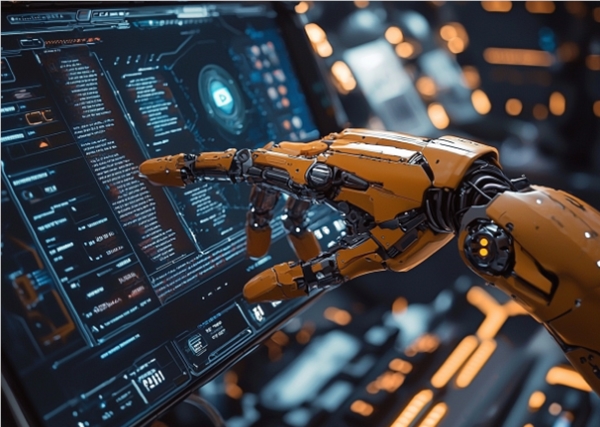The rise of Artificial Intelligence (AI) in the field of architectural design is unstoppable, but it is not all-powerful; at least for now, it cannot replace human creativity.

Image Source Note: Image generated by AI, image licensed from Midjourney
Discover Popular AI-MCP Services - Find Your Perfect Match Instantly
Easy MCP Client Integration - Access Powerful AI Capabilities
Master MCP Usage - From Beginner to Expert
Top MCP Service Performance Rankings - Find Your Best Choice
Publish & Promote Your MCP Services
The rise of Artificial Intelligence (AI) in the field of architectural design is unstoppable, but it is not all-powerful; at least for now, it cannot replace human creativity.

Image Source Note: Image generated by AI, image licensed from Midjourney
Welcome to the [AI Daily] column! This is your daily guide to exploring the world of artificial intelligence. Every day, we present you with hot topics in the AI field, focusing on developers, helping you understand technical trends, and learning about innovative AI product applications.

Noetic Robotics has completed its Pre-A+ round financing, led by Qiming Venture Partners, with multiple institutions participating and increasing their investments, achieving oversubscription. The company's cumulative fundraising has reached tens of millions of yuan, with funds used for the collection, processing, and R&D of multimodal data for embodied intelligence.

A Cambridge University philosopher points out that due to the huge gap in our understanding of the nature of consciousness, we may never be able to determine whether artificial intelligence truly has consciousness.
Anhui released the proposal for the "14th Five-Year Plan", emphasizing economic upgrading driven by technological innovation, with a focus on promoting the construction of Digital Anhui. It will build a high-level national data element comprehensive pilot zone, innovate the development and utilization model of data resources, create a national integrated data market hub, and promote the development of the real economy.

The world's first large-scale production line for humanoid robots has been launched at Ningde Times. The robot called "Xiamo" is now batch-produced to handle high-voltage testing of battery packs, replacing complex manual operations traditionally performed by workers.

Google Labs introduces an experimental AI email assistant called 'CC', which integrates Gmail, calendar, and cloud storage, offering personalized morning emails to remind you of schedules, tasks, and files, achieving intelligent cross-application management.

Google launches its new lightweight model, Gemini 3 Flash, with response speed three times faster than the previous generation, nearly zero latency, and surpassing the flagship Gemini 3 Pro in multiple high-difficulty benchmark tests. The model is freely available worldwide and has been integrated into tools such as the Gemini App and AI Studio, breaking through performance and cost boundaries.

The Ministry of Education issued a notice to use artificial intelligence technology to improve the management of primary and secondary school examinations, piloting the application of AI in areas such as question setting, test paper compilation, and grading to enhance the professionalism and scientific nature of examinations.

Meta adopts an 'AI-first' strategy, integrating rival AI tools from Google, OpenAI, and Anthropic into workflows for coding, writing, design, and decision-making.....

Chongqing has released the 'Artificial Intelligence +' action plan, with 'Intelligent Native' as its core, systematically cultivating new consumer products, services, and business models driven by AI, and building a full-stack AI terminal ecosystem covering personal, family, and commercial scenarios. The plan focuses on six directions, promoting the deep integration of AI and hardware, including supporting the development of upgraded intelligent terminal devices such as AI phones and AI computers with multi-modal interaction and in-depth intent understanding capabilities.

A research team from Purdue University and the Georgia Institute of Technology published a study in "Frontiers in Science," pointing out that the traditional Von Neumann architecture causes a 'memory wall' problem due to the separation of memory and processor, consuming a significant amount of time and energy. To address this bottleneck, they proposed building a new computer architecture using brain-inspired algorithms, aiming to significantly reduce the energy consumption of artificial intelligence models.